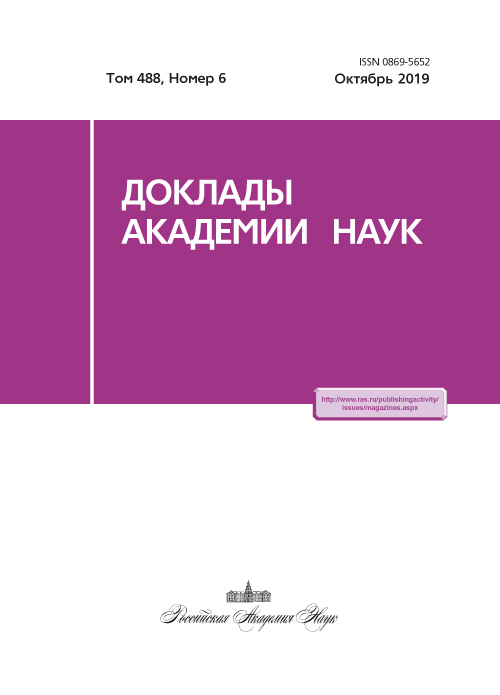Comparative analysis of the biosynthesis of isoprenoid and aromatic cytokinins
- Authors: Oslovsky V.E.1, Savelieva E.M.2, Drenichev M.S.1, Romanov G.A.2, Mikhailov S.N.1
-
Affiliations:
- Engelhardt Institute of Molecular Biology of the Russian Academy of Sciences
- K.A. Timiryazev Institute of Plant Physiology of the Russian Academy of Sciences
- Issue: Vol 488, No 6 (2019)
- Pages: 673-676
- Section: Biochemistry, biophysics, molecular biology
- URL: https://journals.eco-vector.com/0869-5652/article/view/17766
- DOI: https://doi.org/10.31857/S0869-56524886673-676
- ID: 17766
Cite item
Abstract
To compare the biosynthesis pathways of aromatic and isoprenoid cytokinins, a series of nucleoside derivatives of natural cytokinins was synthesized and their cytokinin activity was determined in a test system based on the model plant Arabidopsis thaliana. Cytokinin nucleosides are known to lack the hormonal activity until cleaving the ribose moiety at the position 9. Our experiments have shown that both ribo- and 5′-deoxyribo derivatives of N 6-isopentenyladenine were able to turn into active cytokinins in planta exhibiting cytokinin activity. By contrast, 5′-deoxy nucleosides of aromatic cytokinins did not show similar activity. Since 5′-deoxy nucleosides cannot phosphorylate in vivo, the direct pathway of active cytokinin formation by cleavage of nucleotides is blocked here. The detected activity in 5′-deoxy nucleosides of isoprenoid cytokinins and the lack of the activity in 5′-deoxy nucleosides of aromatic cytokinins indicates a difference in the biosynthesis of these compounds.
About the authors
V. E. Oslovsky
Engelhardt Institute of Molecular Biology of the Russian Academy of Sciences
Email: smikh@eimb.ru
Russian Federation, 32, Vavilov street, Moscow, 119991
E. M. Savelieva
K.A. Timiryazev Institute of Plant Physiology of the Russian Academy of Sciences
Email: smikh@eimb.ru
Russian Federation, 35, Botanicheskaya street, Moscow, 127276
M. S. Drenichev
Engelhardt Institute of Molecular Biology of the Russian Academy of Sciences
Email: smikh@eimb.ru
Russian Federation, 32, Vavilov street, Moscow, 119991
G. A. Romanov
K.A. Timiryazev Institute of Plant Physiology of the Russian Academy of Sciences
Email: smikh@eimb.ru
Russian Federation, 35, Botanicheskaya street, Moscow, 127276
S. N. Mikhailov
Engelhardt Institute of Molecular Biology of the Russian Academy of Sciences
Author for correspondence.
Email: smikh@eimb.ru
Russian Federation, 32, Vavilov street, Moscow, 119991
References
- Sakakibara H. // Annu. Rev. Plant Biol. 2006. V. 57. P. 431-449.
- Romanov G.A. // Rus. J. Plant Physiol. 2009. V. 56. P. 268-290.
- Lomin S.N., Krivosheev D.M., et al. // J. Exp. Bot. 2015. V. 66. P. 1851-1863.
- Savelieva E.M., Oslovsky V.E., et al. // Phytochemistry. 2018. V. 149. P. 161-177.
- Kamínek M. // J. Plant Growth Regul. 2015. V. 34. P. 723-739.
- Komada-Nobusada T., Sakakibara H. // Phytochemistry. 2009. V. 70. P. 444-449.
- Drenichev M.S., Oslovsky V.E., et al. // Eur. J. Med. Chem. 2016. V. 111. P. 84-94.
- Jordheim L.P., Durantel D., et al. // Nat. Rev. Drug Discov. 2013. V. 12. P. 447-464.
- Romanov G.A., Kieber J.J., Schmülling T. // FEBS Lett. 2002. V. 515. P. 39-43.
- Abusamhadneh E., McDonald N.E., Kline P.C. // Plant Science. 2000. V. 153. P. 25-32.
- Chen C.M., Kristopeit S.M. // Plant Physiol. 1981. V. 68. P. 1020-1023.
Supplementary files







